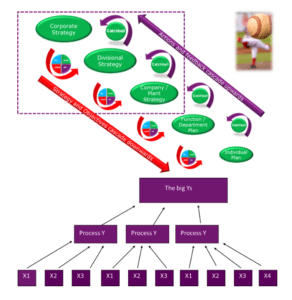
Image produced by Sophie Smiles. Click here to find out more.
Becoming a Transformation Maestro with Agile
Once upon a time you could build a 5-year strategic plan and deliver it. Now for many organisations, even the idea of planning an annual budget would require a crystal ball – such is the pace of change.
At Catalyst, we are uncovering new ways of working by blending tried-and-tested techniques (Lean Six Sigma, Balanced Scorecard, Hoshin Kanri / Strategy Deployment, Change Management etc.) with the new kids on the block (e.g. Lean Start-up, Business Model Canvas, Digital, Modern Agile, and RPA etc.) to deliver successful transformation at a pace we could only dream of just a few years ago.
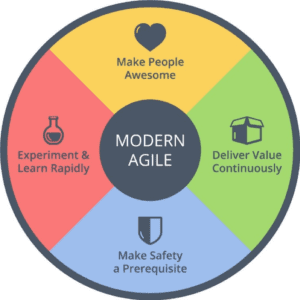
Lighting the Fire in People
The cornerstone of successful transformation is culture. As our colleague Chris Merriman of Shingo Institute fame puts it “we talk about burning platforms and establishing the need for change but in truth our real job is to light the fire inside of people. Inspire and engender a sense of purpose and the intrinsic motivation so they can play their part in delivering it”.
Psychological Safety is a prerequisite for this modern type of transformation. Evidence from psychology and neuroscience has largely ended the debate in terms of building world-class organisations. Surprisingly few have understood or even recognised the shift. The wolf is at the door.
Purpose-driven organisations able to call upon their volunteer army to inspect-and-adapt at all levels within the organisation, are delivering breakthrough transformation at an unprecedented pace.
What Toyota discovered in the 1950s is proving ever more significant as we ready ourselves to move into the 2020s.
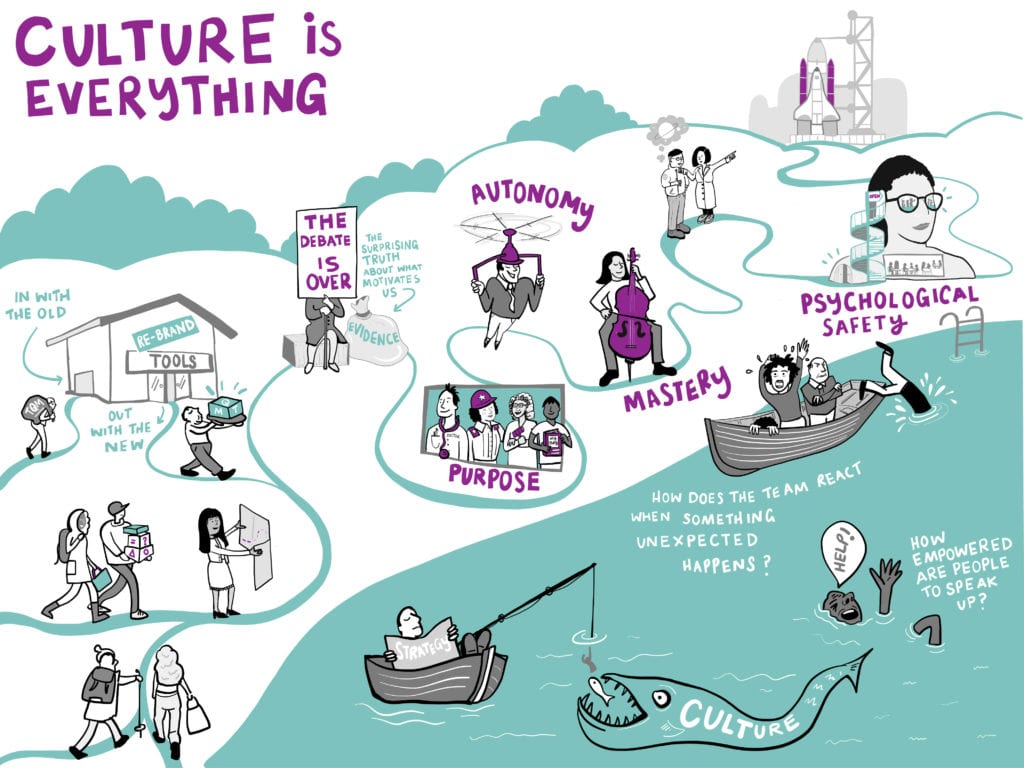
Image produced by Sophie Smiles. Click here to find out more.
Translating the Vision into Reality
Values, mission and vision provide the trajectory and the compass.
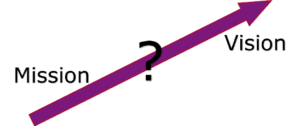
We use the Agile technique called Business Model Canvas to articulate the as is and to be business models. This is very important. If we can tell the story on a page, we can articulate it. For self-organisation to flourish, we need everyone to grasp the True North to get us from “A” to “B” so they can figure out how they can best support it.
From the Business Model Canvas, we map the “to be” onto a Strategy Map to understand the cause and effect levers. This means we can turn our strategy into a series of testable hypotheses with explicit relationships amongst the perspectives.
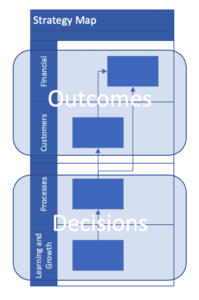
What gets measured gets managed
Next, we create a Balanced Scorecard to validate our assumptions and measure if we are on track.
For SMEs and modest-sized companies we may move straight to action planning at this point via a Kanban Portfolio (see below); prioritise, execute and track the initiatives, experiments and transformational efforts.

Making it Scale
For medium to larger companies, we need something which works at scale. Hoshin Kanri / Strategy Deployment provides an excellent nesting pattern to promote self-organisation and alignment of the transformational efforts using a “catchball” process.
Get the right things done without the trappings of management of objectives / command and control fiat.
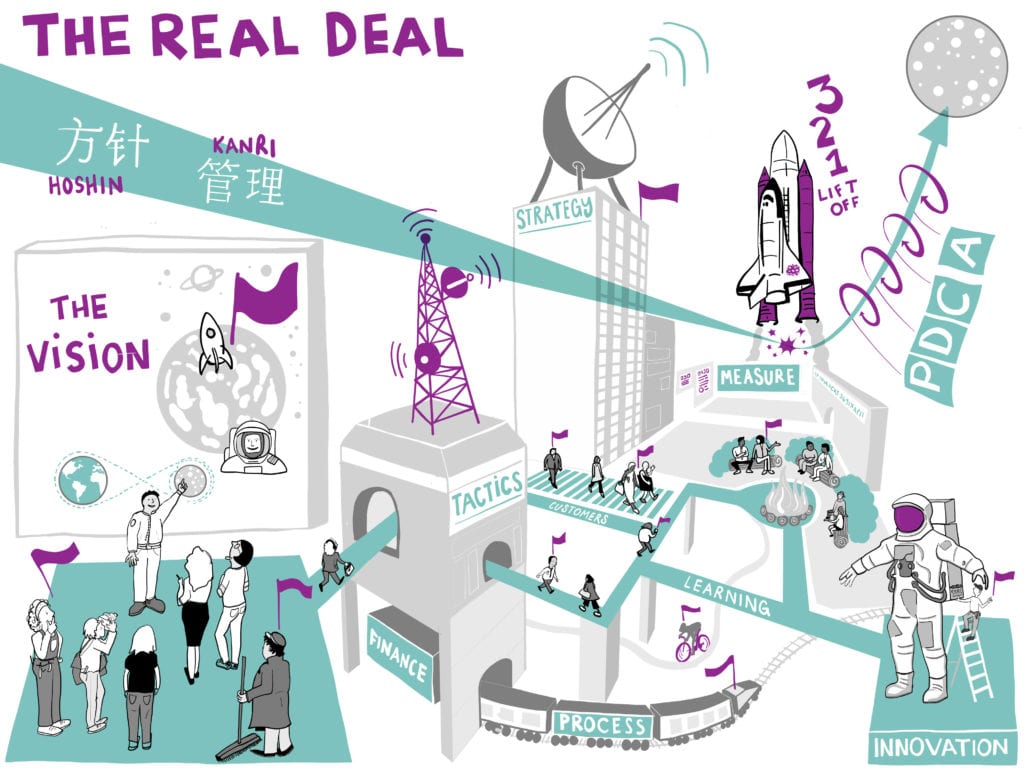
Image produced by Sophie Smiles. Click here to find out more.
Turbo-Charged Transformation
When it comes to delivering transformation, thanks to the Agile movement we have far more weapons compared to only a few years ago:
Agile-accelerated Lean Six Sigma
Many of you will know that we have collaborated with clients in recent months to develop an innovative way to use Agile project management techniques to accelerate Lean Six Sigma process improvement projects.
Kanban Project Portfolio
A project portfolio Kanban ensures we break business value down into manageable chunks and limit the WIP. This leads to faster delivery and increased throughput. Whether the answer is processes, products, RPA (Robotic Process Automation), Digital, or even best-shoring, we can manage everything in the same view. Focus on the critical few rather than the meaningless many and get the right stuff done!
Lean Start-up
Lean Start-up introduces us to the idea of the Minimum Viable Product – the simplest experiment which could possibly work to test our business assumption. This is like gold dust in transformation since we learn fast on a fraction of the budget of traditional techniques.
Patterns and Antipatterns
Inspired by TRIZ and the Software world, we are currently building a library of patterns and antipatterns to describe repeating problems we see in the transformation world, for which there are a recognised and proven solutions.
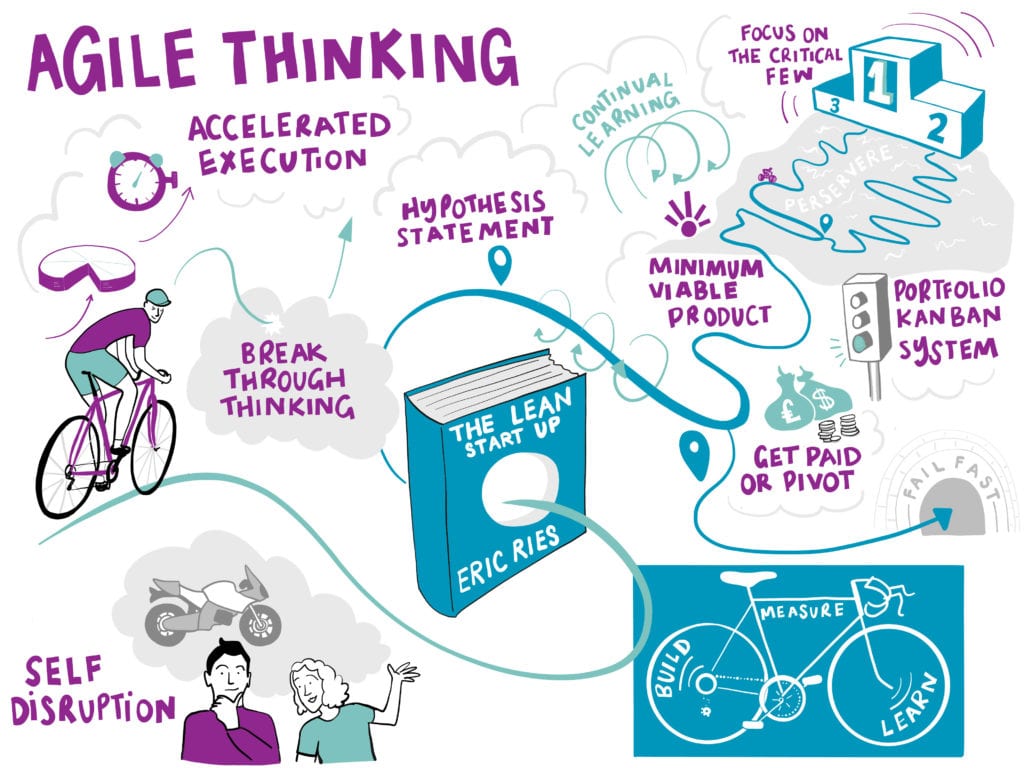
Image produced by Sophie Smiles. Click here to find out more.
Join the Revolution
You are probably reading this thinking the techniques described would help your organisation. We are thrilled by the results so far and we would like to hear from you, if you would like to get involved. You can do this by contacting us or by joining the webinar below.
We promise this is fun and inspiring stuff which delivers concrete results and better organisations.
Become part of the revolution today!

